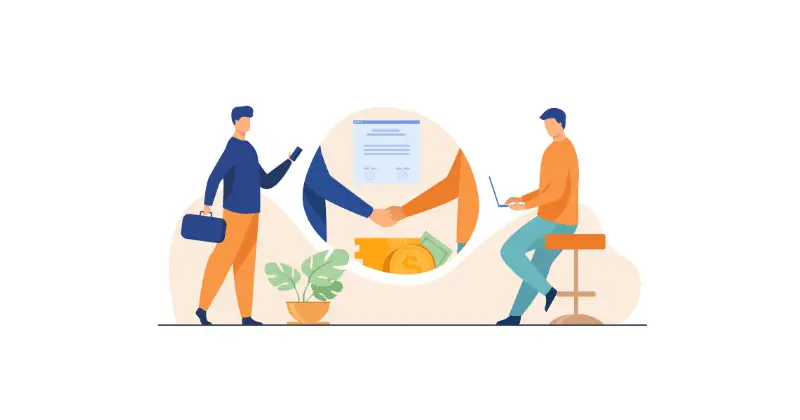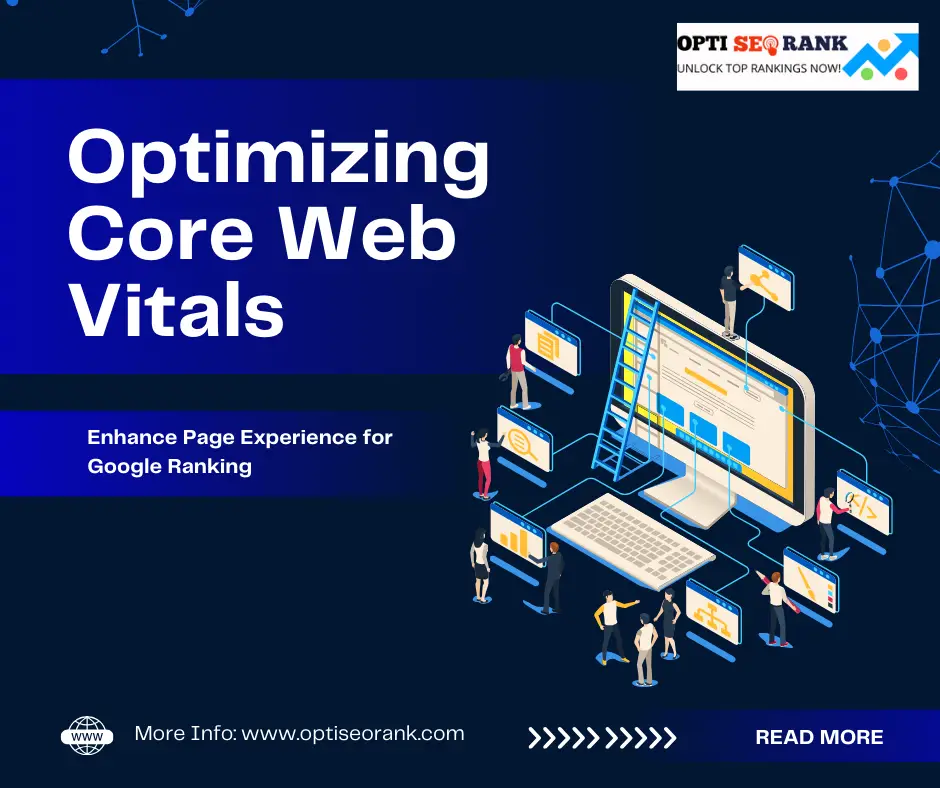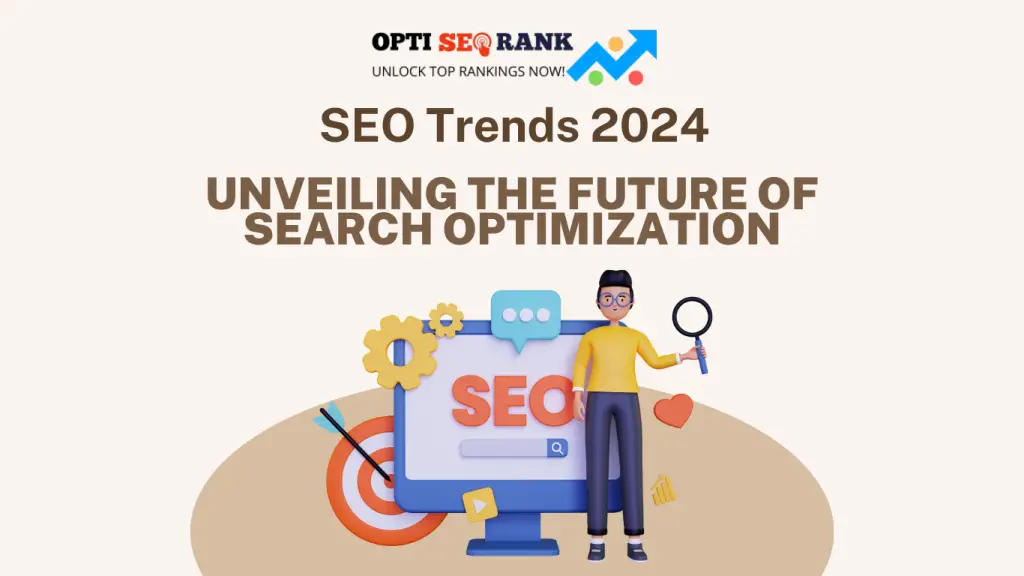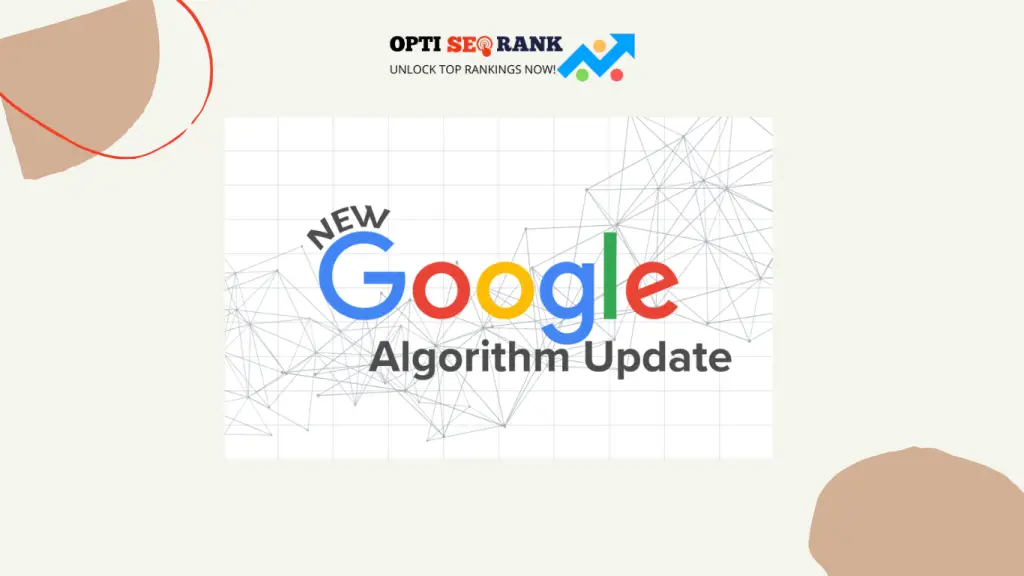Optimizing Core Web Vitals is essential for improving page experience and boosting Google rankings. Focus on loading speed, interactivity, and visual stability.
Core Web Vitals are crucial metrics Google uses to evaluate user experience. These include Largest Contentful Paint (LCP), First Input Delay (FID), and Cumulative Layout Shift (CLS). Improving these metrics not only enhances user satisfaction but also positively impacts your site’s SEO performance.
Faster loading times, responsive interactions, and stable visuals contribute to lower bounce rates and higher engagement. By optimizing Core Web Vitals, you ensure your website meets Google’s standards for page experience, leading to better visibility and higher search rankings. Start by analyzing your current performance and implementing necessary changes to improve these key metrics.
Core Web Vitals Introduction

To improve your website’s performance, understanding Core Web Vitals is crucial. These metrics, created by Google, measure user experience. Optimizing them can enhance your site’s Google ranking.
Definition And Importance
Core Web Vitals include three main metrics: Largest Contentful Paint (LCP), First Input Delay (FID), and Cumulative Layout Shift (CLS).
- Largest Contentful Paint (LCP) measures loading performance. It should occur within 2.5 seconds.
- First Input Delay (FID) measures interactivity. It should be less than 100 milliseconds.
- Cumulative Layout Shift (CLS) measures visual stability. It should be less than 0.1.
These metrics are critical for user satisfaction. A fast, responsive site keeps users happy and engaged.
Google’s Role In Rankings
Google uses Core Web Vitals to rank pages. Sites with better scores appear higher in search results.
Google’s algorithm prioritizes sites that provide a great user experience. Optimizing Core Web Vitals helps your site rank better.
| Metric | Good | Needs Improvement | Poor |
| LCP | ≤ 2.5s | 2.5s – 4s | ≥ 4s |
| FID | ≤ 100ms | 100ms – 300ms | ≥ 300ms |
| CLS | ≤ 0.1 | 0.1 – 0.25 | ≥ 0.25 |
Use Google’s tools like PageSpeed Insights to measure your site’s performance. The better your scores, the higher your site can rank. Focus on these metrics to improve user satisfaction and SEO.
Largest Contentful Paint (lcp)
The Largest Contentful Paint (LCP) is a critical metric for page experience. It measures the time it takes for the largest content element to load. A good LCP score is essential for Google ranking. Optimizing LCP can significantly enhance user experience.
What Is Lcp?
LCP stands for Largest Contentful Paint. It focuses on the main content load time. This metric indicates how fast the largest text block or image loads. A fast LCP ensures users see the most important content quickly. Google recommends an LCP of under 2.5 seconds.
Improving Lcp
Improving LCP involves several strategies:
- Optimize images and videos:
- Compress images using modern formats like WebP.
- Use responsive images to serve the right size.
- Minimize CSS and JavaScript:
- Remove unused CSS and JavaScript files.
- Defer non-critical JavaScript loading.
- Enhance server response time:
- Use a Content Delivery Network (CDN).
- Optimize server configuration.
- Implement lazy loading:
- Load images and videos only when they are visible.
Here’s a table summarizing the key actions for improving LCP:
| Action | Details |
| Optimize Images | Use WebP, compress, and serve responsive images. |
| Minimize CSS/JS | Remove unused files and defer non-critical scripts. |
| Enhance Server Response | Use CDN, optimize server configuration. |
| Lazy Loading | Load media only when visible. |
By following these steps, you can achieve a better LCP score. This will improve your site’s performance and ranking.
First Input Delay (fid)
First Input Delay (FID) is a crucial metric for measuring page interactivity. It helps determine how quickly users can interact with your page. A lower FID means a better user experience, leading to improved rankings on Google.
What Is Fid?
FID stands for First Input Delay. It measures the time from when a user first interacts with your page to the time the browser responds. This interaction can be a click, tap, or key press.
FID is essential because it impacts the user’s first impression of your website. A high FID can frustrate users and lead to higher bounce rates.
Optimizing Fid
To optimize FID, focus on reducing JavaScript execution time. Here are some practical steps:
- Defer non-critical JavaScript: Only load essential scripts initially.
- Use web workers: Offload heavy computations to a background thread.
- Minimize main-thread work: Reduce tasks that block the main thread.
Implementing these strategies can significantly reduce FID. Additionally, consider the following tips:
- Optimize third-party scripts: Limit the use of third-party code.
- Break up long tasks: Split up JavaScript execution into smaller chunks.
- Prioritize user interactions: Ensure the main thread is free for user tasks.
By focusing on these areas, you can enhance your page experience and improve your Google ranking.
Cumulative Layout Shift (cls)

Optimizing your website’s Core Web Vitals is crucial for improving page experience and Google ranking. One key metric is Cumulative Layout Shift (CLS). It measures visual stability. A low CLS score ensures a smooth user experience.
What Is Cls?
Cumulative Layout Shift (CLS) quantifies unexpected layout shifts. These shifts occur during the lifespan of a webpage. Content moves around, causing a poor user experience. CLS scores range from 0 to 1. A score close to 0 is ideal. Scores over 0.1 need improvement.
| CLS Score | User Experience |
| 0 | Excellent |
| 0.1 or below | Good |
| Above 0.1 | Poor |
Reducing Cls
To reduce Cumulative Layout Shift, follow these best practices:
- Specify size attributes for images and videos: Define width and height to reserve space.
- Use CSS aspect ratio boxes: These maintain aspect ratios for embeds and iframes.
- Avoid inserting content above existing content: This includes ads and banners.
- Use transform animations instead of properties: This prevents layout shifts.
Adhering to these practices minimizes unexpected shifts. A stable layout enhances user experience and improves SEO.
Tools For Measuring Core Web Vitals
Optimizing Core Web Vitals is crucial for enhancing your page experience. These metrics help improve Google ranking. Several tools can measure Core Web Vitals effectively. They provide insights into your website’s performance. Below are some of the best tools for this task.
Google Lighthouse
Google Lighthouse is a powerful tool for auditing web pages. It is integrated into Chrome DevTools. Lighthouse provides a detailed analysis of your website’s performance. This includes Core Web Vitals such as Largest Contentful Paint (LCP), First Input Delay (FID), and Cumulative Layout Shift (CLS).
- Open Chrome DevTools.
- Select the “Lighthouse” tab.
- Click “Generate report” to see the results.
The report highlights areas for improvement. This helps developers make necessary adjustments to enhance page experience.
Pagespeed Insights
PageSpeed Insights is another essential tool for measuring Core Web Vitals. It provides both lab and field data. This dual approach helps identify performance issues. The tool gives a score based on your website’s speed and user experience.
- Visit the PageSpeed Insights website.
- Enter your URL in the search box.
- Click “Analyze” to get the report.
The report includes metrics like LCP, FID, and CLS. It also offers suggestions for optimization. These insights help enhance your page’s performance and ranking.
| Tool | Metrics Covered | Features |
| Google Lighthouse | LCP, FID, CLS | Detailed analysis, integrated with Chrome |
| PageSpeed Insights | LCP, FID, CLS | Lab and field data, optimization suggestions |
Using these tools, you can effectively measure and optimize Core Web Vitals. This will improve your website’s performance and Google ranking.
Best Practices For Optimization
Optimizing Core Web Vitals is crucial for a better page experience and higher Google ranking. This section covers the best practices to enhance your website’s performance.
Efficient Image Loading
Images can significantly slow down your page load times. Implementing efficient image loading can improve performance.
Follow these steps to optimize image loading:
- Use responsive images to serve different sizes for different devices.
- Implement lazy loading to load images only when they appear in the viewport.
- Compress images using tools like TinyPNG or ImageOptim.
- Use modern image formats like WebP for better compression.
Minimizing Javascript
Excessive JavaScript can slow down your website and affect user experience. Minimizing JavaScript is crucial for faster loading times.
Here are some best practices:
- Remove unused JavaScript files and code.
- Defer non-essential JavaScript to speed up initial page load.
- Minify your JavaScript files using tools like UglifyJS or Google Closure Compiler.
- Use asynchronous loading for third-party scripts.
Implementing these practices will enhance your website’s performance and improve your Core Web Vitals scores.
Common Challenges And Solutions
Optimizing Core Web Vitals is essential for a better page experience. It directly impacts Google rankings. Many face challenges in this process. Below, we explore common challenges and their solutions.
Slow Server Response Times
Slow server response times can hurt your Core Web Vitals. A fast server response improves First Input Delay (FID) and Largest Contentful Paint (LCP). Here are some common causes and solutions:
| Cause | Solution |
| High Traffic | Use a Content Delivery Network (CDN) |
| Large Database | Optimize and clean up your database |
| Slow Hosting | Upgrade to a faster hosting plan |
Render-blocking Resources
Render-blocking resources delay the loading of your page. This affects the First Contentful Paint (FCP) and Speed Index. Addressing render-blocking resources can improve your scores.
- Minimize CSS and JavaScript files
- Use asynchronous loading for JavaScript
- Inline critical CSS
Use these methods to solve the render-blocking issue:
- Identify render-blocking resources using tools like Google PageSpeed Insights
- Defer loading non-critical JavaScript
- Use to load critical resources early
By addressing these challenges, you can enhance your website’s performance. This will improve your Core Web Vitals and boost your Google ranking.
Future Trends In Web Vitals
The Future Trends in Web Vitals are crucial for optimizing your website. Staying updated ensures a better user experience and improved Google rankings. This section delves into two key areas shaping the future of Core Web Vitals.
Evolving Metrics
Google continuously updates its metrics to reflect user needs. New metrics may focus on user interactions and real-world performance. Current metrics like Largest Contentful Paint (LCP) and Cumulative Layout Shift (CLS) will evolve.
Expect metrics that account for user device capabilities. These metrics will better measure performance on low-end and high-end devices. Consistent updates will help developers focus on user-centric improvements.
Impact Of Ai And Machine Learning
AI and Machine Learning will revolutionize web optimization. These technologies can predict user behavior and adjust content dynamically. Websites will become smarter and more responsive.
AI can identify patterns in user data to optimize loading times. Machine Learning algorithms can suggest layout changes for better user engagement. These advancements will make meeting Core Web Vitals easier.
Below is a table summarizing potential AI impacts on Core Web Vitals:
| AI Application | Potential Benefits |
| Data Analysis | Predicts user behavior for better optimization |
| Dynamic Content | Adjusts content for faster load times |
| Layout Suggestions | Improves user engagement |
Implementing these AI-driven solutions will be essential for future-proofing your site. Staying ahead of these trends will enhance user experience and boost your Google ranking.
Frequently Asked Questions
How Important Is Core Web Vitals For Google Ranking?
Core Web Vitals are crucial for Google ranking. They impact user experience, influencing your site’s search engine visibility and performance.
How To Improve Google Core Web Vitals?
Optimize images, use lazy loading, improve server response time, minimize JavaScript, and leverage browser caching to enhance Core Web Vitals.
What Does Optimize For Core Web Vitals Mean?
Optimizing for Core Web Vitals means improving website speed, responsiveness, and visual stability. It enhances user experience and SEO rankings.
How To Improve Website Ranking On Google?
To improve website ranking on Google, create high-quality content, optimize for keywords, and ensure mobile-friendliness. Build quality backlinks and enhance user experience. Regularly update your site and improve page loading speed.
Conclusion
Enhancing Core Web Vitals is crucial for improving your site’s performance and Google ranking. Focus on metrics like LCP, FID, and CLS. Prioritize user experience to see significant benefits. Regularly monitor and update your website to maintain optimal performance. Achieving these goals will lead to higher engagement and better search engine visibility.



